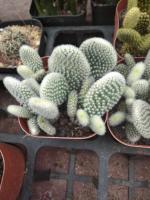Should I Cover My Tomato Plants When it Rains?
Tomatoes are a staple in many home gardens, and their growth and health are essential to producing a bountiful harvest. However, environmental factors like rain and storms can negatively impact tomato plants, leaving gardeners to wonder whether they should cover their tomato plants when it rains. In this article, we will examine the pros and cons of covering tomato plants during rain and explore the best strategies to protect their health.
The Pros of Covering Tomato Plants During Rain
Covering tomato plants during rain can provide several benefits. The following are some of the reasons why it might be a good idea to cover your tomato plants:
1. Protection Against Disease and Pest Infestations
Tomato plants are particularly vulnerable to fungal diseases like blight, which can spread quickly during wet weather. Covering tomato plants with plastic sheeting, tarpaulins, or other materials during rain can help prevent the plants' leaves from getting wet, thereby reducing the chances of fungal diseases' growth. Moreover, covering tomato plants also protects them from insects and pests that may be attracted to the wet plant. This method can reduce the need for pesticides, which can cause harm to beneficial insects and the environment.
2. Preventing Soil Erosion and Waterlogging
Heavy rains can cause soil erosion and waterlogging, which can damage the roots of tomato plants. Covering tomato plants with plastic or other materials can help prevent waterlogging, by allowing excess water to drain away. Moreover, covering the soil around tomato plants can also prevent soil erosion, by keeping the soil in place and reducing runoff. This method can be particularly beneficial for tomato plants that are grown in poorly drained soil or areas prone to heavy rainfall.
The Cons of Covering Tomato Plants During Rain
While there are many benefits to covering tomato plants during rain, there are also some drawbacks to consider. The following are some of the reasons why it might not be a good idea to cover your tomato plants:
1. Interfering with Photosynthesis and Growth
Tomato plants rely on sunlight for photosynthesis, which is essential for their growth and development. Covering tomato plants with plastic or other materials during rain can interfere with photosynthesis by reducing the amount of sunlight the plant receives. This can result in stunted growth and reduced yield, which can be detrimental to the plant's overall health.
2. Increasing the Risk of Heat Stress
Plastic sheeting and other coverings can trap heat and moisture around the plant, creating a greenhouse effect. This can increase the risk of heat stress, which can lead to wilting, leaf drop, and other issues. Tomato plants are particularly vulnerable to heat stress, and covering them during rain can exacerbate the problem, rather than protecting them.
The Best Strategies for Protecting Tomato Plants During Rain
After weighing the pros and cons of covering tomato plants during rain, it becomes clear that a balance must be struck to keep tomato plants healthy and productive. The following are some of the strategies you can implement:
1. Use a Lightweight Covering Material
If you decide to cover your tomato plants during rain, choose a lightweight covering material like horticultural fleece or shade cloth that can still allow sunlight and air to pass through. Avoid using plastic sheeting or other non-permeable materials that can trap heat and moisture.
2. Cover the Soil Rather Than the Plant
Instead of covering the entire plant, cover the soil around the tomato plant with a layer of straw or mulch. This can help prevent soil erosion and waterlogging, which can lead to root rot and other issues. Moreover, it can also help retain moisture around the plant, reducing the need for watering.
3. Prune the Plant and Provide Support
Pruning the tomato plant can help improve ventilation and prevent the plant from becoming overgrown. Additionally, providing support in the form of stakes or cages can help prevent the plant from becoming damaged during heavy rains or strong winds.
In conclusion, the decision to cover tomato plants during rain should weigh the benefits and drawbacks of the practice. While covering the plant can protect it from disease and pests, it can also interfere with the plant's growth and development. Balancing these factors with practical strategies for protection can help keep tomato plants productive and flourishing.

 how many times do yo...
how many times do yo... how many planted tre...
how many planted tre... how many pine trees ...
how many pine trees ... how many pecan trees...
how many pecan trees... how many plants comp...
how many plants comp... how many plants can ...
how many plants can ... how many plants and ...
how many plants and ... how many pepper plan...
how many pepper plan...































